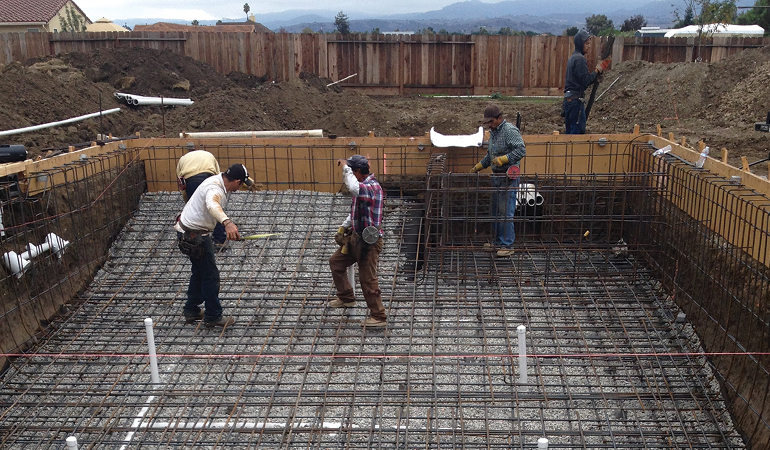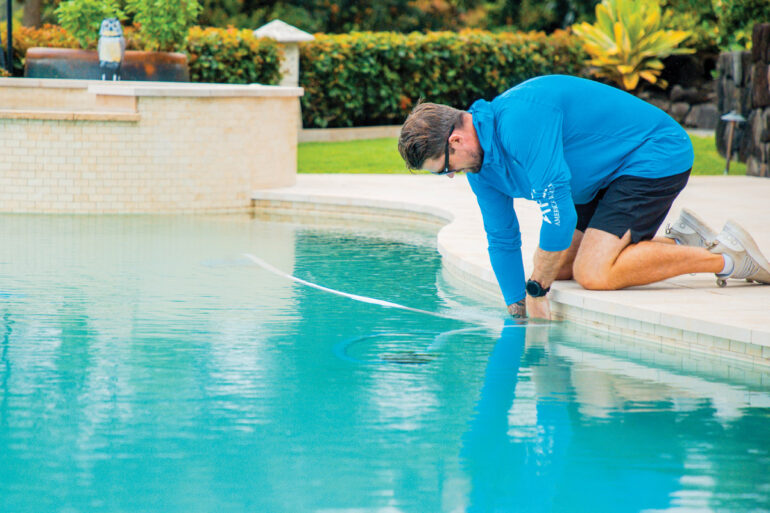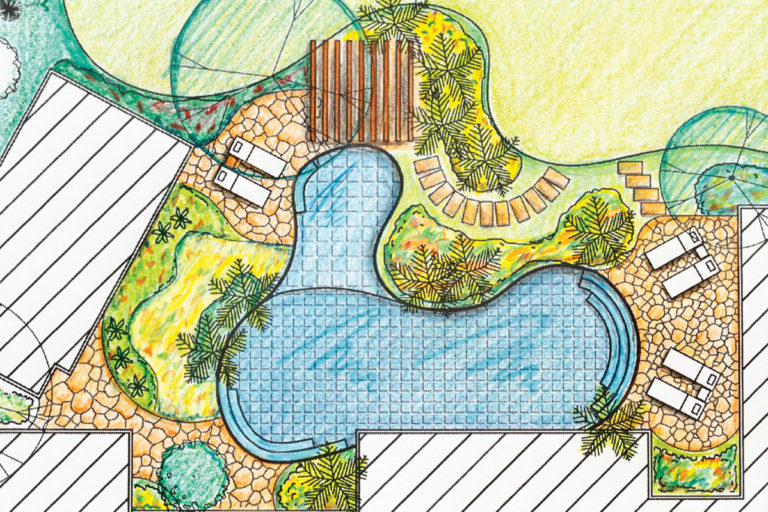Rebar Placement

Rebar, or reinforced steel poles, are a vital structural element of a pool. They are used to support the concrete, which would move and break if set against soil alone. Pool construction crews must place each steel bar and drop of concrete with precision to avoid future structural problems.
The tendency is to lay rebar the way one’s predecessor did it, passing down strategies through generations of pool contractors. However, methods must be updated to accommodate new information.
A structural engineer must design all elements of the pool construction, down to the last centimeter, for optimal structural integrity. “Concrete swimming pools are structures and, therefore, by code, require structural engineering,” says Paolo Benedetti, principal for Aquatic Technology Pool & Spa in Morgan Hill, California. “The structural engineering will define the placement of the reinforcing steel within the wall, the spacing of the bars, the diameter of the bars and their schedule (or strength).”
Soil is a primary determinant for a structural engineer’s placement of the rebar in his design, Benedetti says. Engineers will rely upon the International Building Code (IBC) and Residential Code (IRC), both of which use the American Concrete Institute’s (ACI) documents, which specify the minimum coverage of concrete between the earth and rebar, rebar and exposed surface (water side), and the methods of installing the rebar.
To verify the rebar for a pool construction is adequately placed, the IBC and IRC require structural engineering; soil reports; deputy inspectors monitoring the entire shotcrete placement process; and independent inspections of the reinforcement (or an inspection by the project engineer). “These special inspections are separate from the inspections done by the local government agency,” Benedetti says. “The IBC and IRC recognize that local building inspectors are not experts and oftentimes do not know what they are looking at.”
Incorrect or inadequate rebar placement can have significant negative effects on the performance of the pool structure. “Placing them too close to the surface or earth can cause corrosion of the reinforcement,” Benedetti says. “Placement within the wall is also critical for the wall to overcome the anticipated loads. Spacing the bars too far apart or creating congestion with too many bars bundled together can cause what is called shadowing, or hollow pockets behind the bars.”
When one bar is too short and needs another attached to extend coverage, builders will often use lap splicing with steel ties to connect them. With this, it’s imperative that the full tension strength is transferred from bar to bar, with higher tensile strength, equating a longer lap splice. “ACI specifies the use of noncontact lap splices for shotcrete,” Benedetti says. “The improper use of contact lap splices can lead to incomplete encapsulation of the steel. It is the tight consolidation and encapsulation of the reinforcement that prevents them from corroding.”
Benedetti recommends all pool contractors, regardless of their roles in the construction process, learn and follow the IBC and IRC building codes. Even if they are not enforced in your area, you will still be responsible if a pool suffers a structural failure. He also recommends pool contractors continue their education, as new information is always available.






